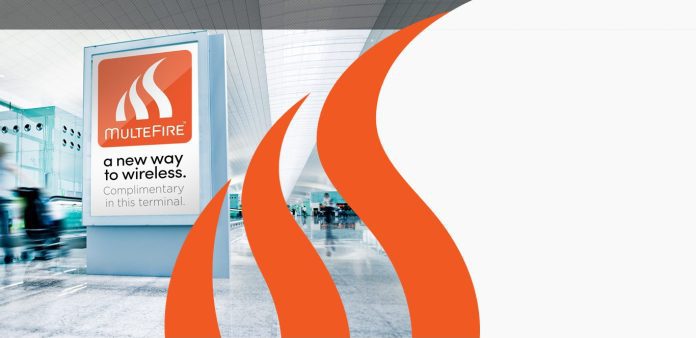MulteFire is a technology for deploying LTE in unlicensed spectrum that was developed by U.S chipmaker Qualcomm. This new technology allows the standalone use of LTE in unlicensed spectrum.
MulteFire can be implemented for the deployment of mobile broadband data services and support VoLTE. It can support handovers among cells in a small-cell deployment and is capable of interworking with external mobile networks for service continuity, according to a technical paper on the technology.
MulteFire may enable enterprises or cable companies to launch their own LTE networks using unlicensed spectrum. Qualcomm expects to see MulteFire adoption within industrial verticals such as shipping ports, mines and airports where large enterprises don’t have licensed spectrum and want more mobility than Wi-Fi typically provides, combined with LTE characteristics such as improved security. MulteFire is also anticipated to be a connectivity option for internet of things deployments.
Additionally, some of the key performance advantages of MulteFire technology include capacity, coverage, LTE-bases security and industry-grade reliability, among others.
According to Qualcomm, the industries addressable by private IoT with LTE/MulteFire are Hospitals & Labs, discrete manufacturing, Military, Oil & Gas Upstream, shipping ports, transportation venues, distribution warehouses, Oil& Gas Downstream, Mining, Power Generation and water treatment facilities, among others.
Qualcomm demonstrated the first over-the-air connection of MulteFire in October of last year. The MulteFire Alliance released its 1.0 version of the specification in January 2017. Qualcomm expects to see initial lab trials by the end of the year and early next, with some field trials based on testing prototypes.
Subscribe now to get the daily newsletter from RCR Wireless News
License Assisted Access (LAA) is an LTE feature that leverages the 5 GHz unlicensed band in combination with licensed spectrum to deliver a performance boost for mobile device users.
LAA optimizes available wireless network resources, and improves app coverage for all users whether their devices are using LAA, licensed cellular or Wi-Fi. LAA leverages a combination of licensed and unlicensed spectrum, using higher frequency bands on a small cell architecture.
To improve app coverage indoors in any size or type of commercial building such as a suburban shopping center, train station or a high-rise office building, Ericsson is adding Licensed Assisted Access (LAA) to its indoor small cell portfolio. The Swedish vendor said that LAA introduces the security and performance associated with high-performance LTE networks to spectrum available in the 5 GHz band.
Ericsson also explained that LAA benefits users on cellular licensed bands. “By distributing traffic between the licensed and unlicensed bands, LAA frees up capacity on the licensed spectrum, benefiting users on those bands,” the vendor said in a report. “LAA also frees up capacity for Wi-Fi users, by employing fair sharing techniques and using the 5GHz band more efficiently.”
Ericsson also said that consumers can leverage the combination of licensed and unlicensed bands to achieve higher peak rates indoor and outdoor.

